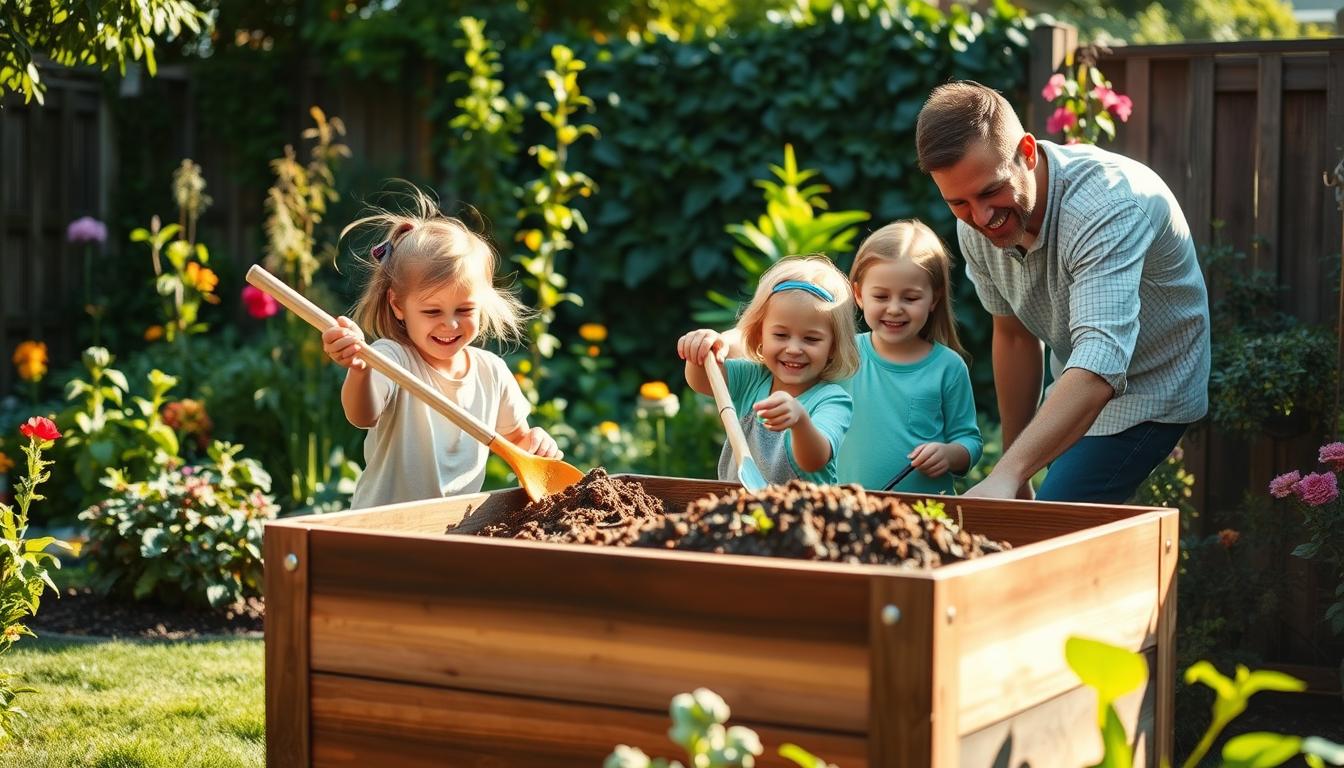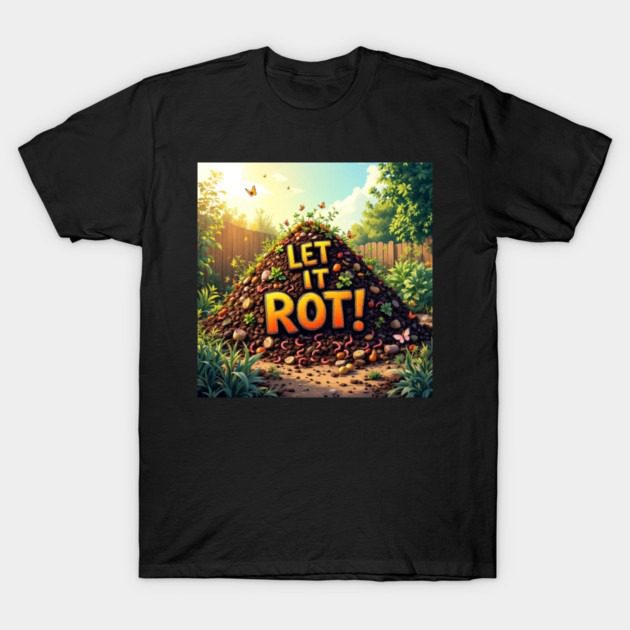What if banana peels and fallen leaves could become your family’s next great adventure? Transforming everyday waste into rich soil offers hands-on science lessons that spark curiosity in young minds.
Children naturally love digging in dirt – why not show them how nature repurposes scraps through simple, engaging activities?
This process teaches more than recycling – it reveals Earth’s hidden rhythms. Young explorers discover how apple cores become plant food while witnessing the magic of transformation firsthand.
Through these experiences, families build deeper connections with natural cycles and each other.
You’ll find projects scaled for different ages, from balcony-friendly bins to backyard setups. These experiments demonstrate soil health basics using items already in your home.
As children track progress, they develop patience and responsibility – skills that grow alongside their gardens.
Key Takeaways
- Transforms household waste into valuable learning moments
- Teaches ecological awareness through tangible results
- Adaptable for various spaces and age groups
- Strengthens observation and scientific reasoning skills
- Creates lasting memories through shared accomplishments
Understanding Composting Basics
Ever wonder how yesterday’s apple core becomes tomorrow’s garden gold?
This natural recycling system turns leftovers and yard trimmings into plant-friendly dirt through teamwork between you and invisible helpers.
What Is Composting?
It’s a living process where banana peels, grass clippings, and fallen leaves transform into nutrient-packed soil.
Tiny organisms like bacteria and fungi munch through organic matter, breaking it down faster than you’d expect.
These microbes need oxygen to thrive, which is why turning your pile matters.
Key Elements of a Compost Pile
Four ingredients make this magic happen:
- Mix of materials: Combine “greens” (food scraps) and “browns” (dry leaves)
- Moisture: Keep it damp like a wrung-out sponge
- Airflow: Turn the pile weekly for oxygen
- Time: Let nature work its 2-6 month transformation
See how oxygen changes the game:
| Factor | Aerobic (With Oxygen) | Anaerobic (No Oxygen) |
|---|---|---|
| Speed | Fast (2-6 months) | Slow (6+ months) |
| Smell | Earth-like | Rotten eggs |
| Nutrients | Rich in nitrogen | Fewer nutrients |
When microbes get enough air, they create heat you can feel with your hand. This warmth means they’re busy making plant superfood!
Watch as orange peels disappear and dark, crumbly soil appears – it’s like a science experiment in your backyard.
Benefits of Composting with Your Kids
Did you know your kitchen scraps could become a superhero for both soil and young minds?
Turning leftovers into black gold does more than reduce trash – it plants seeds of environmental care that grow with every banana peel added to the pile.
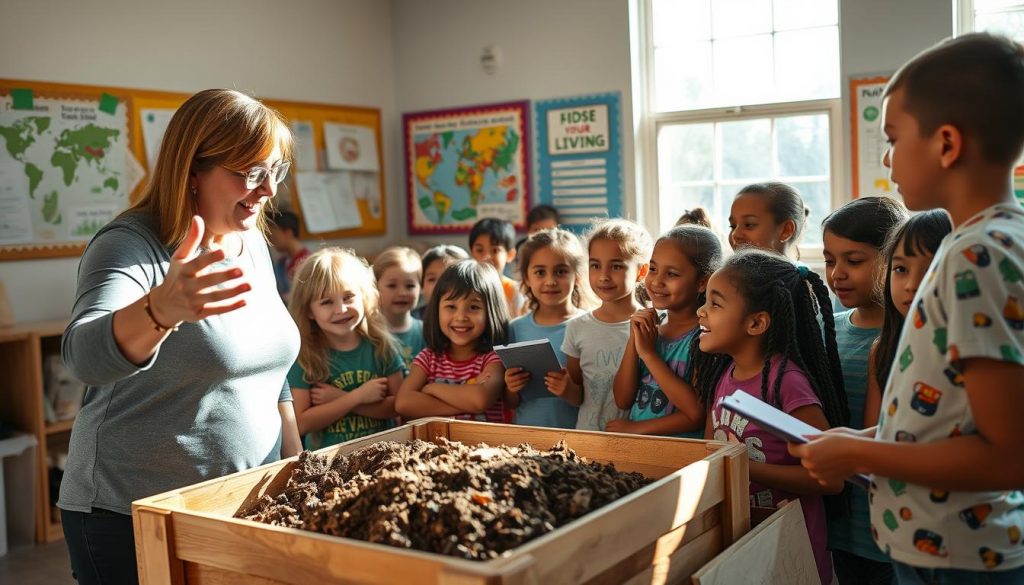
Environmental and Educational Advantages
Every household that composts keeps 330 pounds of waste from landfills yearly. That’s like taking a small car off the road for two months!
Through this process, children grasp how apple cores can become dinner for plants instead of methane gas in the atmosphere.
Watch young scientists light up when they discover:
| Before Composting | After Composting |
|---|---|
| Food scraps in plastic bags | Nutrient-rich soil |
| Chemical fertilizers | Natural plant food |
| Dry, lifeless dirt | Moisture-rich garden booster |
Families save $50-$100 annually on garden supplies while creating Earth’s best fertilizer.
More importantly, kids learn that patience and care create real change – dark, crumbly soil doesn’t appear overnight.
Through this hands-on part of eco-living, children become problem-solvers who see value where others see trash.
They’ll carry these lessons into adulthood, understanding how small actions protect our planet.
How to Set Up Your Compost Bin at Home
Imagine turning an old plastic container into a bustling ecosystem right in your backyard.
With just a few household items, you’ll create a living classroom where decomposition becomes an exciting daily discovery.
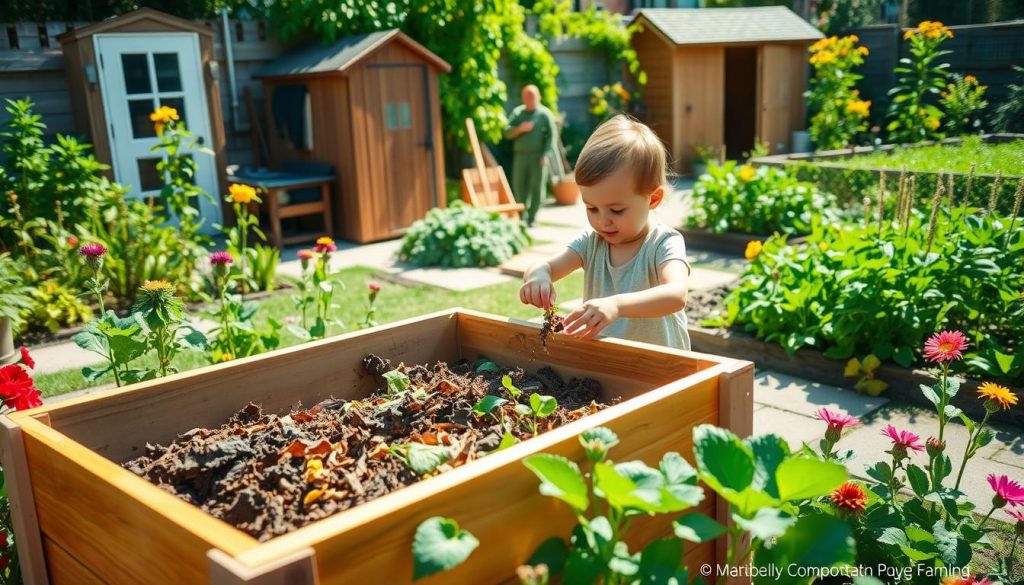
Choosing the Right Bin or Pile
An 80-liter lidded storage bin works perfectly for most families. Look for one made of durable plastic – it’s lightweight enough for kids to handle but sturdy enough for outdoor use.
The lid keeps curious critters out while letting air circulate through drilled holes.
Prefer an open-air approach?
A simple pile in a shaded corner works too. Just remember: enclosed bins speed up decomposition and prevent messes. Either method teaches the same core principles of nutrient cycling.
Establishing Proper Aeration and Moisture
Grab a drill and let kids punch holes in the lid, sides, and bottom. This creates highways for oxygen – the secret sauce for fast decomposition.
Place the bin on a tray to catch nutrient-rich “compost tea” that makes plants thrive.
Check moisture weekly by squeezing a handful. Aim for dampness like a wrung-out sponge. Too dry? Spray water lightly. Too wet?
Add shredded newspaper. This balance keeps microbes happy and odors at bay.
Watch as your family’s food scraps transform into dark, crumbly soil. It’s science in action – no fancy equipment required!
Composting for Kids: Fun Projects to Try Together
What transforms kitchen scraps into garden treasure while fitting on your windowsill? A simple glass jar becomes a living science exhibit when young explorers build their own decomposition lab.
This activity lets children witness nature’s recycling magic up close – no backyard required.
Building a Decomposition Observatory
Start with clean wide-mouth jars – mason jars work perfectly.
Help your crew layer materials like sandwich ingredients: garden soil forms the base, followed by shredded newspaper, apple cores, and dried leaves.
Each addition teaches how different materials break down at varying speeds.
Punch 5-7 holes in the lid together using a nail and hammer. “This lets our tiny dirt workers breathe,” you can explain while demonstrating safe tool use.
Fill jars halfway to leave room for mixing and settling.
| Week | Observations | Action Needed |
|---|---|---|
| 1-2 | Visible food pieces | Shake gently daily |
| 3-4 | White mold appears | Add dry leaves |
| 5-6 | Darkening materials | Record changes |
| 10-12 | Rich soil smell | Harvest compost |
Mark initial fill levels with washable marker. Every fourteen days, measure how much the contents settle – this visual timeline shows progress even when changes seem slow.
Rotate jars near sunny windows to maintain warmth without direct baking.
Great Design For Kids and Big Kids!
Young scientists will notice fascinating changes: carrot peels becoming fuzzy with mold, leaves dissolving into lace-like patterns, and finally, dark crumbly earth emerging.
This twelve-week journey teaches patience and reveals how nature repurposes leftovers into life-giving resources.
Gathering and Balancing Compost Materials
Your family’s kitchen becomes a science lab when sorting organic treasures.
Young detectives learn to separate waste into two teams: nitrogen-packed green materials and carbon-loaded brown materials. This sorting game turns mealtime leftovers into garden gold.
Identifying Green Materials
These moist items kickstart decomposition. Show your crew how to spot:
- Squishy fruit peels and vegetable ends
- Crushed eggshells (rinse first!)
- Fresh grass clippings and plant trimmings
Store these in a small countertop bin. Remind everyone: green materials break down fast but need balancing partners.
Identifying Brown Materials
Dry components keep your pile breathing. Turn collection into a scavenger hunt:
- Crispy fallen leaves from backyard raids
- Shredded junk mail (non-glossy only)
- Used coffee filters with grounds still attached
Keep a dedicated outdoor bin for these treasures. They’re nature’s blanket for smelly food scraps.
| Green Materials | Brown Materials | Ratio Rule |
|---|---|---|
| Food scraps | Dry leaves | 2 parts brown 1 part green |
| Fresh grass | Cardboard | |
| Plant trimmings | Tea bags |
Teach the golden ratio with hand measurements. For every handful of orange peels, add two of shredded paper.
This balance prevents slimy piles and keeps neighbors smiling. Soon, your crew will instinctively layer apple cores under autumn leaves – mastering nature’s recipe for black gold.
Engaging Kids with Hands-On Composting Activities
Who knew your living room could become a stage for microscopic superheroes? Transform playtime into discovery time with creative methods that make decomposition exciting and tangible.
Microbe Theater Adventures
Grab Tiny Creatures: The World of Microbes from your local library. Kids become bacteria directors – bendy hair curlers transform into actinomycetes, while sponges stand in for fungi. Create stories where these “garden heroes” battle food waste mountains.
Heat Detective Missions
Hand your crew meat thermometers for a temperature treasure hunt. They’ll discover:
| Location | Temperature | Action |
|---|---|---|
| Pile Center | 110-160°F | Microbes working! |
| Surface | Air temp | Needs mixing |
Record findings daily in a science journal. “The hot spot moved!” they’ll shout as decomposition progresses.
Digital Decomposition Challenges
The University of Manchester’s Microbe Quest game turns screens into learning tools. Children guide virtual bacteria through leaf piles, earning points for proper material balancing. It’s gaming with purpose – they’ll beg to play while absorbing nature’s recycling process.
Mix these approaches to suit different learners.
Kinesthetic kids love acting out microbe dramas, while analytical minds thrive on temperature tracking.
By framing decomposition as an adventure, you’ll nurture lifelong environmental stewards.
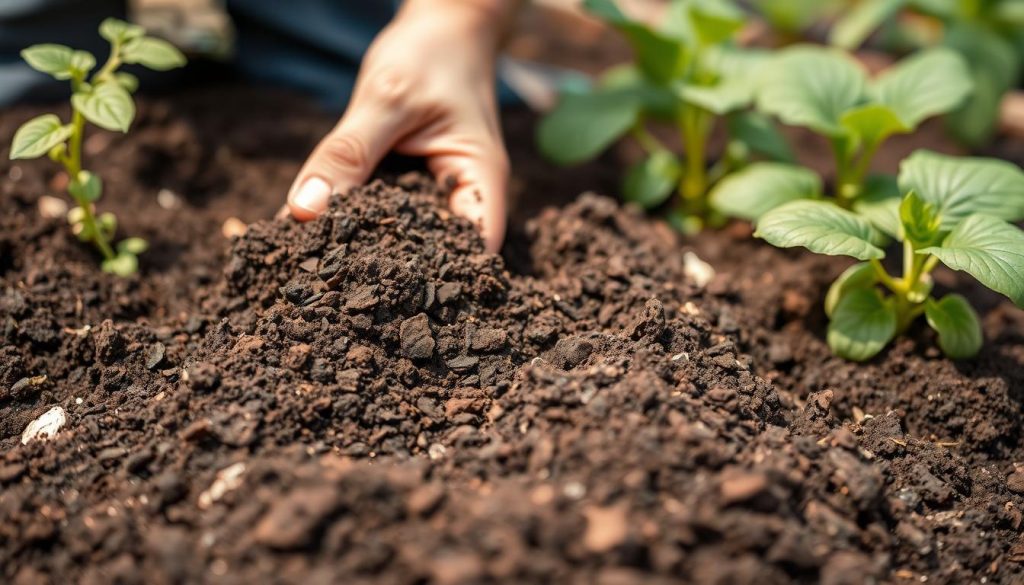
Maintaining Your Compost Pile or Bin
Ready to become compost caretakers? Keeping your organic recycling system thriving requires simple daily checks and weekly teamwork.
Think of it as nurturing a living recipe – the right balance keeps your garden helpers happy.
Moisture and Temperature Checks
Squeeze a handful of materials every day to test dampness. Aim for the feel of a wrung-out sponge. Too dry?
Spray water lightly. Too soggy? Mix in shredded paper or dry leaves. Kids love using their hands for this quick science experiment.
Turn the compost pile weekly with child-sized tools. This aerates the mix and prevents unwanted odors. Watch for these signs:
- Steamy warmth in the center (good!)
- Earth-like smell (success!)
- Rodent visits (add a secure lid to your bin)
Make mixing a family ritual. Younger children can poke the pile with sticks while older ones record temperature changes.
A well-maintained bin transforms scraps faster – your plants will thank you!
Stick to your routine, and soon you’ll harvest rich soil together. These small daily actions teach big lessons about nature’s cycles and teamwork.

